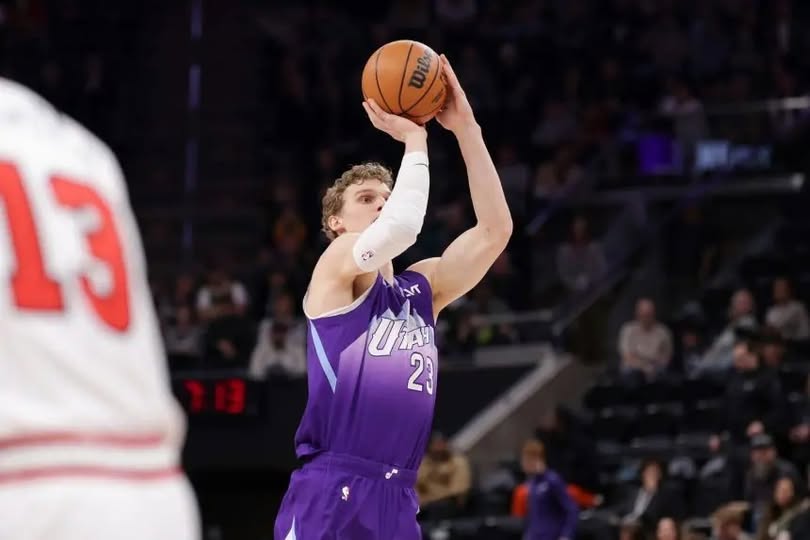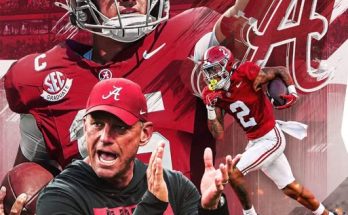Bleacher Report has once again stirred the NBA rumor mill with a bold and thought-provoking trade proposal—this time involving Utah Jazz star forward Lauri Markkanen. As the offseason heats up and front offices begin evaluating pathways to contention or rebuilding, Markkanen’s name has become a focal point for teams seeking scoring versatility and frontcourt shooting. The trade package floated by Bleacher Report isn’t just turning heads; it’s igniting serious conversations across the basketball landscape about Markkanen’s value, the Jazz’s direction, and which franchise stands to benefit the most from a blockbuster move.
Markkanen, a 7-foot forward with elite perimeter shooting ability, took his game to another level after being traded to the Jazz. In Utah, he’s emerged not just as a stretch-four but as an All-Star-level offensive engine. During the 2023–24 season, Markkanen averaged over 23 points per game while shooting close to 40% from three-point range, all while displaying improved rebounding and defensive consistency. At 27, he’s entering the prime of his career and remains under contract for an extremely team-friendly deal. That combination of production, potential, and affordability makes him arguably one of the most coveted trade assets in the NBA.
Bleacher Report’s proposed trade sends Markkanen to a contender that is just one piece away from serious championship aspirations. In the mock deal, Markkanen is acquired by the Golden State Warriors in exchange for Jonathan Kuminga, Moses Moody, and a future first-round draft pick. On paper, this proposal walks a fine line between immediate impact for the Warriors and long-term rebuilding assets for the Jazz. For both teams, it reflects contrasting but coherent goals—one pushing to stay in the title mix with a new-look core around Stephen Curry, and the other eyeing a fresh foundation of young, athletic wings to develop in a retooling process.
From the Warriors’ standpoint, the trade is both bold and logical. Golden State is in the twilight of its dynastic window. With Klay Thompson’s future uncertain, Draymond Green aging, and Curry still playing at an MVP-caliber level, the Warriors are desperate for a high-impact acquisition who can shoulder offensive responsibilities and keep defenses honest. Markkanen fits seamlessly into Steve Kerr’s motion-heavy offense. His ability to shoot off the catch, pick-and-pop with Curry, and stretch the floor from either forward position would instantly modernize a Warriors lineup that has too often looked stagnant in half-court sets.
Moreover, the Warriors wouldn’t be sacrificing win-now pieces to acquire Markkanen. Kuminga and Moody, while promising, have yet to make the consistent leap required to keep the Warriors in serious contention. Kuminga, in particular, has shown flashes of brilliance with his athleticism and scoring upside but has struggled with decision-making and defensive awareness. Moody has provided quality minutes in spurts but hasn’t fully cracked the rotation in a meaningful way. By moving both players—and a future first-round pick that likely lands in the late 20s—the Warriors could capitalize on Curry’s final elite years and give themselves a legitimate shot at another ring.
On the Jazz’s end, this deal speaks to long-term vision and flexibility. Utah has already made it clear that while they respect Markkanen’s production, they aren’t committed to holding onto him unless it fits their larger rebuild. The team is loaded with draft capital thanks to trades involving Rudy Gobert and Donovan Mitchell, but they need actual players who can grow into centerpieces. Kuminga could be a star in a new system with more room to operate, more minutes, and less pressure. His high ceiling as a two-way forward would be a gamble worth taking, especially for a team not focused on immediate wins. Moody, meanwhile, offers valuable three-and-D potential and is still just 22 years old.
Additionally, the first-round pick sweetens the deal and gives Utah another chip to play with down the road—either to package in a future trade or to draft another young contributor. Danny Ainge, known for his asset-accumulating approach in Boston and now in Utah, has been patient. This kind of return—two lottery-pedigree prospects and a pick—for a non-superstar, albeit highly efficient scorer like Markkanen, is the kind of calculated move that aligns with his long-term blueprint.
Still, the trade isn’t without its critics. Some argue that Utah should demand more for Markkanen given his production, contract value, and the growing number of teams desperate for frontcourt shooting. Others believe Golden State is giving up too much youth, and that selling on Kuminga now could haunt them down the road if he reaches his full potential elsewhere. There’s also the matter of fit—would Markkanen be enough to bring Golden State back into the elite tier of the West, especially when teams like Denver, Minnesota, and Oklahoma City are younger, deeper, and hungrier?
There’s also a financial dimension to consider. While Markkanen’s current deal is a bargain, he’ll be eligible for a significant extension soon. For Golden State, already deep into the luxury tax, the question becomes how much they’re willing to pay to field a championship-caliber roster. Ownership has historically shown a willingness to spend, but at some point, even the deepest pockets will question the cost-benefit ratio of locking in an expensive core that may only have one or two more years at a high level.
From a basketball purist’s angle, however, the trade is tantalizing. Imagine a Warriors lineup with Curry, Markkanen, Draymond, and Wiggins, with Chris Paul or a young guard running the second unit. Offensively, Markkanen’s presence spaces the floor in ways the Warriors haven’t experienced since the peak Kevin Durant years. His ability to score at all three levels and stretch opposing bigs away from the paint opens up more driving lanes for Curry and gives Kerr more tactical flexibility.
For Utah, it’s a move toward a younger, more athletic identity. In many ways, it mirrors what OKC has done—accumulating young, switchable wings with upside and supplementing them with picks and complementary pieces. If Kuminga takes a leap, the Jazz could end up with a franchise cornerstone for the next decade, while also freeing up more usage and development time for other young players like Keyonte George, Taylor Hendricks, and Walker Kessler.
Bleacher Report’s trade proposal for Lauri Markkanen isn’t just theoretical; it represents the crossroads many NBA franchises find themselves at today. With parity across the league at historic levels, the margin between contending and rebuilding is razor-thin. One move can either catapult a team toward the Finals or push it deeper into irrelevance. In this proposed deal, the Warriors would be betting on present-day firepower over future promise, while the Jazz would be embracing patience and potential over immediate wins.
Ultimately, whether this deal comes to fruition or not, it speaks volumes about Markkanen’s value in today’s NBA. He’s a uniquely skilled forward who can be the missing link for a contender or a central piece in a youth-driven rebuild. His versatility makes him one of the most intriguing names on the market—and with the draft and free agency looming, expect teams to come calling. If the Jazz do decide to part with Markkanen, Bleacher Report’s mock trade might be a roadmap for how they do it: high-upside prospects, financial flexibility, and more draft capital to stockpile for the future. Whether it’s Golden State or another contender, the race for Lauri Markkanen could be one of the most consequential storylines of the NBA offseason.



